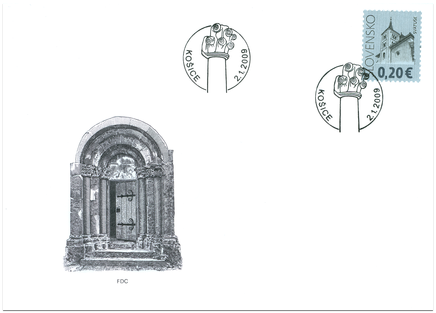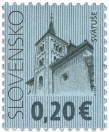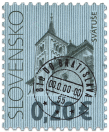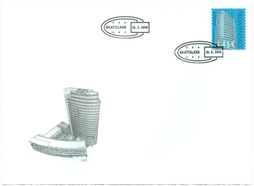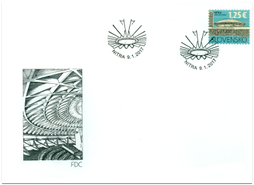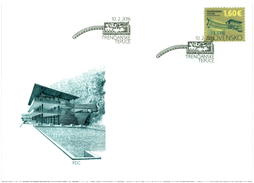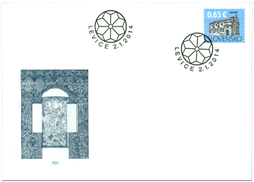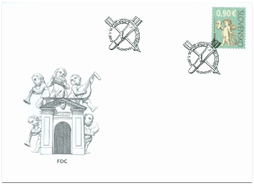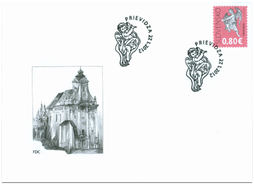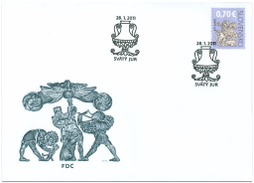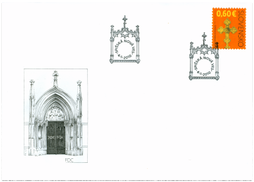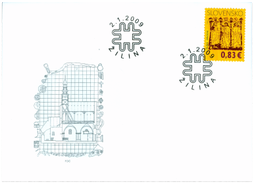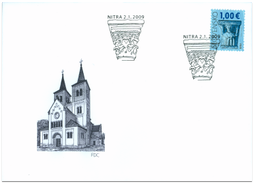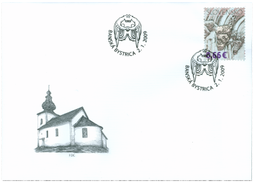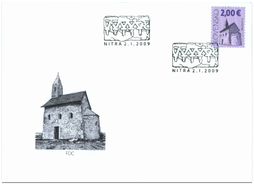FDC 442 Date of issue
02.01.2009 Face value
0.20 € Sell price
1.20 €
© Slovak Post, 2009 The church is situated on a slight hill. From the original Romanesque building only its western part has been preserved after the reconstruction in the 2nd half of the 15th century, i.e. the façade with a portal and a gallery above which a built-in tower rises. However, also such a small part of the former architecture proves that the church belonged to the noblest rural buildings. It is an example of brick Romanesque architecture on the southern verge of the eastern Slovakia. Apart from brick, also stone was used during its construction, of which the part of decorative architectonic elements is made. The most representative is the western jamb portal. Its lintel is made of pairs of jambs on both sides into which monolithic columns are inserted. They rest on bases with corner petals and bear decorated heads – on the left, heads are in the form of berries and the right ones of leaves. One of the semicircular archivolts in the upper part of the portal has consoles on its endings that are typical of Romanesque architecture late phase. The whole tower interior is distinctive thanks to a quite rich plastic division. Lisenes on its corners give way to horizontal circular friezes combined with a dentil. On its upper floors there are windows with semicircular endings. In joint windows on the two highest floors, central columns have been preserved. The interior gallery supported by three arcades (the southern one is in the form of a three-leave) has an interesting structure. Arcades are supported by two massive columns with smooth goblet heads. The central arcade on the upper floor dominates this part of the church and at the same time it serves as a supporting tower wall. Preserved architectonic details of the church in Svätuše are similar to those of the church in nearby Karcsa. The same group of stonemasons worked on both buildings in the 1st decade of the 13th century. Such an architectonic connection proves that the church must have originated earlier than it is recorded in the oldest written mention on the village from the year 1245. Bibiana Pomfyová
Show less© 2024 POFIS - Postal philatelic service. All rights reserved

